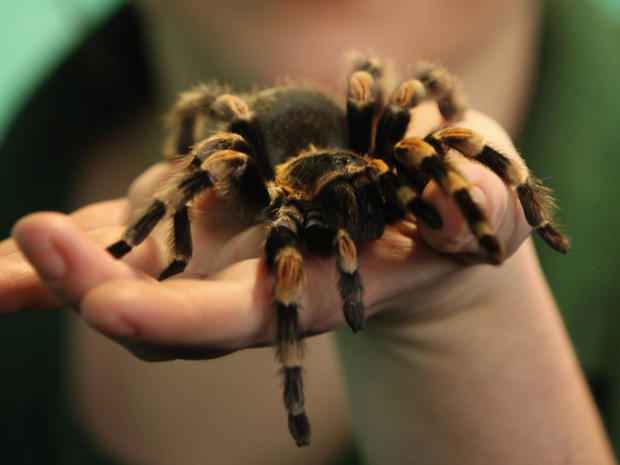Scared of spiders? A 2-hour therapy session may help, study shows
(CBS News) Arachnophobia - or a fear of spiders - is one of the most common "specific phobias" among the 7 percent of the population who suffers from this type of anxiety disorder . For some spider-phobes, their anxiety is so intense that they won't stay in their homes if they see an eight-legged creature crawl by.
But new research shows a promising treatment for those afflicted with arachnophobia. Northwestern University researchers found out that after a single therapy session, subjects were able to touch or hold a tarantula - even up to six months after the session.
In the study, which was published in the May 21 issue of Proceedings of the National Academy of Sciences, 12 adults with arachnophobia were examined with functional MRI (fMRI) brain scans. Before starting therapy, the researchers monitored their brains as they approached a tarantula in a terrarium. When they saw the spider, the sections of their brain related to fear response - the amygdala, insula, and cingulate cortex - lit up with activity. On average, subjects could not get closer than 10 feet to the tarantula.
Then the subjects underwent a two-to-three hour therapy session called "short-exposure therapy" in which they were taught about tarantulas and learned many of the fears they believed about spiders was not true.
"They thought the tarantula might be capable of jumping out of the cage and onto them," Katherina Hauner, post-doctoral fellow in neurology at Northwestern University Feinberg School of Medicine and lead author of the paper, said in the press release. "Some thought the tarantula was capable of planning something evil to purposefully hurt them. I would teach them the tarantula is fragile and more interested in trying to hide herself."
Then, the subjects gradually learned to approach the spider until they touched the outside of the terrarium. They were then instructed to touch the spider with a paintbrush, then a glove, then pet it with their bare hands or hold it.
"They understood that the spider's movements were predictable and could be controlled," Hauner told WebMD. "Fear is about not having control and not being able to predict what will happen."
Brain scans revealed that subjects who had higher activity in regions of the brain associated with visual perception of fear-inducing stimuli were the most likely to be the least afraid of spiders six months after therapy ended. Hauner said that finding could be useful in predicting who would benefit from exposure therapy.
The activity in the fear response centers immediate decreased right after the spider treatment, the study found, however the area of the brain that showed fear inhibition was not changed six months later, suggesting that a different brain mechanism may control immediate versus long-term phobia reduction.
About 7 percent of U.S. population has a "specific phobia" anxiety disorder. WebMD has more on phobias.

